A Focus on Electromobility within Smart City Solutions—Charging Stations, Renewable Energy, and Air Quality Monitoring
Abstract
:1. Introduction
2. Electromobility in Brno and Glasgow
2.1. Brno
2.2. Glasgow
3. Air Quality Monitoring
4. Smart Cities as Dual-Use Technology for Civil and Military Purposes
5. Conclusions
Author Contributions
Funding
Institutional Review Board Statement
Informed Consent Statement
Data Availability Statement
Acknowledgments
Conflicts of Interest
Abbreviations
| IoT | Internet of Things |
| LED | Light Emitting Diode |
| CO | Carbon Dioxide |
| EV | Electric Vehicle |
| PV | Photovoltaic |
| NFC | Near-Field Communication |
| PM1, PM2.5, and PM10 | Particulate Matter |
| O | Ozone |
| NO | Nitrogen Dioxide |
| NO | Nitric Oxide |
| CO | Carbon Monoxide |
| SO | Sulfur Dioxide |
| HS | Hydrogen Sulfide |
| LPWAN | Low-Power Wide-Area Network |
| LoRaWAN | Long-range Wide-Area network |
| WTW | Well-to-Wheel |
| WTT | Well-to-Tank |
| TTW | Tank-to-Wheel |
| H2V | Home-to-Vehicle |
| V2H | Vehicle-to-Home |
| G2V | Grid-to-Vehicle |
| V2G | Vehicle-to-Grid |
| V4G | Vehicle-for-Grid |
| V2L | Vehicle-to-Load |
| PEV | Plug-In Electric Vehicle |
| UK | United Kingdom |
| PVGIS | Photovoltaic Geographical Information System |
| CHMI | Czech Hydrometeorological Institute |
| WHO | World Health Organization |
| GPS | Global Positioning System |
| UAV | Unmanned Aerial Vehicles |
| BEV | Battery Electric Vehicles |
| HEV | Hybrid Electric Vehicles |
References
- Kane, M. Europe: Plug-In Car Sales Increased 3% in May 2022. Available online: https://insideevs.com/news/594688/europe-plugin-car-sales-may-2022/ (accessed on 26 August 2022).
- Biya, T.S.; Sindhu, M.R. Design and Power Management of Solar Powered Electric Vehicle Charging Station with Energy Storage System. In Proceedings of the 2019 3rd International conference on Electronics, Communication and Aerospace Technology (ICECA), Coimbatore, India, 12–14 June 2019; pp. 815–820. [Google Scholar] [CrossRef]
- Jensanyayut, T.; Phongtrakul, T.; Yenchamchalit, K.; Kongjeen, Y.; Bhumkittipich, K.; Nadarajah, M. Design of Solar-Powered Charging Station for Electric Vehicles in Power Distribution System. In Proceedings of the 2020 8th International Electrical Engineering Congress (iEECON), Chiang Mai, Thailand, 4–6 March 2020; pp. 1–4. [Google Scholar] [CrossRef]
- Gucın, T.N.; Ince, K.; Karaosmanoğlu, F. Design and power management of a grid-connected Dc charging station for electric vehicles using solar and wind power. In Proceedings of the 2015 3rd International Istanbul Smart Grid Congress and Fair (ICSG), Istanbul, Turkey, 29–30 April 2015; pp. 1–4. [Google Scholar] [CrossRef]
- Matanov, N.; Zahov, A.; Angelov, I. Modeling of the Electric Vehicle Charging Process—Part 1. In Proceedings of the 2021 13th Electrical Engineering Faculty Conference (BulEF), Varna, Bulgaria, 8–11 September 2021; pp. 1–4. [Google Scholar] [CrossRef]
- Glasgow City Council. Implementation Report Glasgow. Available online: https://ruggedised.eu/fileadmin/repository/Publications/Implementation_Report_Glasgow_in_RUGGEDISED.pdf (accessed on 26 August 2022).
- European Union. DIRECTIVE 2008/50/EC of the european parliament and of the council—On ambient air quality and cleaner air for europe. Off. J. Eur. Union 2008, 152, 1–44. [Google Scholar]
- Zhang, K.; Batterman, S. Air pollution and health risks due to vehicle traffic. Sci. Total. Environ. 2013, 450–451, 307–316. [Google Scholar] [CrossRef] [PubMed] [Green Version]
- Alnawaiseh, N.A.; Hashim, J.H.; Isa, Z.M. Relationship Between Vehicle Count and Particulate Air Pollution in Amman, Jordan. Asia-Pac. J. Public Health 2015, 27, NP1742–NP1751. [Google Scholar] [CrossRef] [PubMed]
- McGrath, S.; Flanagan, C.; Zeng, L.; O’Leary, C. IoT Personal Air Quality Monitor. In Proceedings of the 2020 31st Irish Signals and Systems Conference (ISSC), Letterkenny, Ireland, 11–12 June 2020; pp. 1–4. [Google Scholar] [CrossRef]
- Jha, R.K. Air Quality Sensing and Reporting System Using IoT. In Proceedings of the 2020 Second International Conference on Inventive Research in Computing Applications (ICIRCA), Coimbatore, India, 15–17 July 2020; pp. 790–793. [Google Scholar] [CrossRef]
- Canals Casals, L.; Martinez-Laserna, E.; Amante García, B.; Nieto, N. Sustainability analysis of the electric vehicle use in Europe for CO2 emissions reduction. J. Clean. Prod. 2016, 127, 425–437. [Google Scholar] [CrossRef]
- Hawkins, T.R.; Singh, B.; Majeau-Bettez, G.; Strømman, A.H. Comparative Environmental Life Cycle Assessment of Conventional and Electric Vehicles. J. Ind. Ecol. 2013, 17, 53–64. [Google Scholar] [CrossRef]
- Notter, D.A.; Gauch, M.; Widmer, R.; Wäger, P.; Stamp, A.; Zah, R.; Althaus, H.J. Contribution of Li-Ion Batteries to the Environmental Impact of Electric Vehicles. Environ. Sci. Technol. 2010, 44, 6550–6556. [Google Scholar] [CrossRef]
- Campanari, S.; Manzolini, G.; Garcia de la Iglesia, F. Energy analysis of electric vehicles using batteries or fuel cells through well-to-wheel driving cycle simulations. J. Power Sources 2009, 186, 464–477. [Google Scholar] [CrossRef]
- Federal Ministry for the Environment, Nature Conservation and Nuclear Safety, Germany. How Eco-Friendly Are Electric Cars? A Holistic View. Available online: https://www.bmuv.de/fileadmin/Daten_BMU/Pools/Broschueren/elektroautos_en_bf.pdf (accessed on 22 August 2022).
- Tran, V.T.; Sutanto, D.; Muttaqi, K.M. The state of the art of battery charging infrastructure for electrical vehicles: Topologies, power control strategies, and future trend. In Proceedings of the 2017 Australasian Universities Power Engineering Conference (AUPEC), Melbourne, Australia, 19–22 November 2017; pp. 1–6. [Google Scholar] [CrossRef] [Green Version]
- Yilmaz, M.; Krein, P.T. Review of Battery Charger Topologies, Charging Power Levels, and Infrastructure for Plug-In Electric and Hybrid Vehicles. IEEE Trans. Power Electron. 2013, 28, 2151–2169. [Google Scholar] [CrossRef]
- Tashakor, N.; Farjah, E.; Ghanbari, T. A Bidirectional Battery Charger with Modular Integrated Charge Equalization Circuit. IEEE Trans. Power Electron. 2017, 32, 2133–2145. [Google Scholar] [CrossRef]
- Monteiro, V.; Pinto, J.G.; Afonso, J.L. Operation Modes for the Electric Vehicle in Smart Grids and Smart Homes: Present and Proposed Modes. IEEE Trans. Veh. Technol. 2016, 65, 1007–1020. [Google Scholar] [CrossRef] [Green Version]
- Kisacikoglu, M.C.; Kesler, M.; Tolbert, L.M. Single-Phase On-Board Bidirectional PEV Charger for V2G Reactive Power Operation. IEEE Trans. Smart Grid 2015, 6, 767–775. [Google Scholar] [CrossRef]
- Clement-Nyns, K.; Haesen, E.; Driesen, J. The Impact of Charging Plug-In Hybrid Electric Vehicles on a Residential Distribution Grid. IEEE Trans. Power Syst. 2010, 25, 371–380. [Google Scholar] [CrossRef] [Green Version]
- Kavousi-Fard, A.; Abunasri, A.; Zare, A.; Hoseinzadeh, R. Impact of plug-in hybrid electric vehicles charging demand on the optimal energy management of renewable micro-grids. Energy 2014, 78, 904–915. [Google Scholar] [CrossRef]
- Faruk, M.M.; Khan, N.T.; Razzak, M.A. Analysis of the Impact of EV Charging on THD, Power Factor and Power Quality of Distribution Grid. In Proceedings of the 2021 Innovations in Power and Advanced Computing Technologies (i-PACT), Kuala Lumpur, Malaysia, 27–29 November 2021; pp. 1–6. [Google Scholar] [CrossRef]
- Khalil, G. Challenges of hybrid electric vehicles for military applications. In Proceedings of the 2009 IEEE Vehicle Power and Propulsion Conference, Dearborn, MI, USA, 7–11 September 2009; pp. 1–3. [Google Scholar] [CrossRef]
- EVMAPA. Available online: https://www.evmapa.cz/ (accessed on 26 August 2022).
- Ministry of Transportation. Vehicle Register. Available online: https://www.dataovozidlech.cz/ (accessed on 26 August 2022).
- datahub.brno. Brno Solar Irradiance 2019. Available online: https://datahub.brno.cz/datasets/mestobrno::intenzita-slune%C4%8Dn%C3%ADho-z%C3%A1%C5%99en%C3%AD-v-brn%C4%9B-2019-brno-solar-irradiance-2019/about (accessed on 26 August 2022).
- City Brno. Maps of Solar Irradiance. Available online: https://mestobrno.maps.arcgis.com/apps/webappviewer/index.html?id=5cdb4bc28ff04948ac2b61c02a36d19e (accessed on 26 August 2022).
- Celik, I.; Philips, A.B.; Song, Z.; Yan, Y.; Ellingson, R.J.; Heben, M.J.; Apul, D. Energy Payback Time (EPBT) and Energy Return on Energy Invested (EROI) of Perovskite Tandem Photovoltaic Solar Cells. IEEE J. Photovolta. 2018, 8, 305–309. [Google Scholar] [CrossRef]
- Bellani, S.; Bartolotta, A.; Agresti, A.; Calogero, G.; Grancini, G.; Di Carlo, A.; Bonaccorso, F. Solution-processed two-dimensional materials for next-generation photovoltaics. Chem. Soc. Rev. 2021, 50, 11870–11965. [Google Scholar] [CrossRef] [PubMed]
- European Commision. Photovoltaic Geographical Information System. Available online: https://re.jrc.ec.europa.eu/pvg_tools/en/ (accessed on 26 August 2022).
- Glasgow City Council. EV Charging Frequently Asked Questions. Available online: https://glasgow.gov.uk/article/24595/Charge-Place-Glasgow-Frequently-Asked-Questions (accessed on 26 August 2022).
- Goodall, O. Glasgow Planning to Double Number of EV Chargers in 2022. Available online: https://www.zap-map.com/glasgow-double-ev-chargers-2022/ (accessed on 26 August 2022).
- Manthey, N. Glasgow Targets Doubling EV Charging Stations. Available online: https://www.electrive.com/2022/03/21/glasgow-targets-doubling-ev-charging-stations-across-town/ (accessed on 26 August 2022).
- Glasgow City Council. FACTSHEET G2 + G4. Available online: https://ruggedised.eu/fileadmin/repository/Factsheets/Ruggedised-factsheet-G2-G4-Glasgow.pdf (accessed on 26 August 2022).
- Evolution Motor Shows. Home-Upcoming Events. Available online: https://evolutionshow.co.uk/ (accessed on 26 August 2022).
- Zap Map. EV Charging Statistics 2022. Available online: https://www.zap-map.com/statistics/ (accessed on 22 August 2022).
- World Health Organization. WHO Air Quality Guidelines for Particulate Matter, Ozone, Nitrogen Dioxide and Sulfur Dioxide; WHO: Geneva, Switzerland, 2005. [Google Scholar]
- Amato, F.; Pandolfi, M.; Viana, M.; Querol, X.; Alastuey, A.; Moreno, T. Spatial and chemical patterns of PM10 in road dust deposited in urban environment. Atmos. Environ. 2009, 43, 1650–1659. [Google Scholar] [CrossRef]
- Morman, S.A.; Plumlee, G.S. The role of airborne mineral dusts in human disease. Aeolian Res. 2013, 9, 203–212. [Google Scholar] [CrossRef]
- Kim, K.; Kabir, E.; Kabir, S. A review on the human health impact of airborne particulate matter. Environ. Int. 2015, 74, 136–143. [Google Scholar] [CrossRef]
- UN-Habitat. World Cities Report 2022—Envisaging the Future of Cities. Available online: https://unhabitat.org/sites/default/files/2022/06/wcr_2022.pdf (accessed on 26 August 2022).
- Rejeb, A.; Rejeb, K.; Simske, S.; Treiblmaier, H.; Zailani, S. The big picture on the internet of things and the smart city. Internet Things 2022, 19, 100565. [Google Scholar] [CrossRef]
- Alsamhi, S.H.; Ma, O.; Ansari, M.S.; Meng, Q. Greening internet of things for greener and smarter cities. Telecommun. Syst. 2019, 72, 609–632. [Google Scholar] [CrossRef]
- Kebande, V.R. Industrial internet of things (IIoT) forensics. Forensic Sci. Int. Rep. 2022, 5, 100257. [Google Scholar] [CrossRef]
- Shearer, A.W. Smart Cities and Resilience. p. 20. Available online: https://www.sto.nato.int/publications/STO%20Educational%20Notes/STO-EN-SAS-149/EN-SAS-149-10.pdf (accessed on 26 August 2022).
- Fuel Cells and Other Emerging Manportable Power Technologies for the NATO Warfighter. p. 138. Available online: https://www.sto.nato.int/publications/STO%20Technical%20Reports/STO-TR-SET-173-Part-I/%24%24TR-SET-173-Part-I-ALL.pdf (accessed on 26 August 2022).
- Lynch, T. Electric Pushies Finding Role on Battlefield. Available online: https://news.defence.gov.au/capability/electric-pushies-finding-role-battlefield (accessed on 26 August 2022).
- Radio Free Europe/Radio Liberty. Ukraine’s Electric Cavalry: The E-Bikes Being Used in Battle. Available online: https://www.rferl.org/a/ukraine-electric-bikes-war-russia-technology/31865559.html (accessed on 26 August 2022).
- Milrem Robotics. The THeMIS UGV. Available online: https://milremrobotics.com/defence/ (accessed on 26 August 2022).
- Bollinger Motors. Bollinger Motors—About. Available online: https://bollingermotors.com/about-us/ (accessed on 26 August 2022).
- Cunanan, C.; Tran, M.K.; Lee, Y.; Kwok, S.; Leung, V.; Fowler, M. A Review of Heavy-Duty Vehicle Powertrain Technologies. Clean Technol. 2021, 3, 474–489. [Google Scholar] [CrossRef]
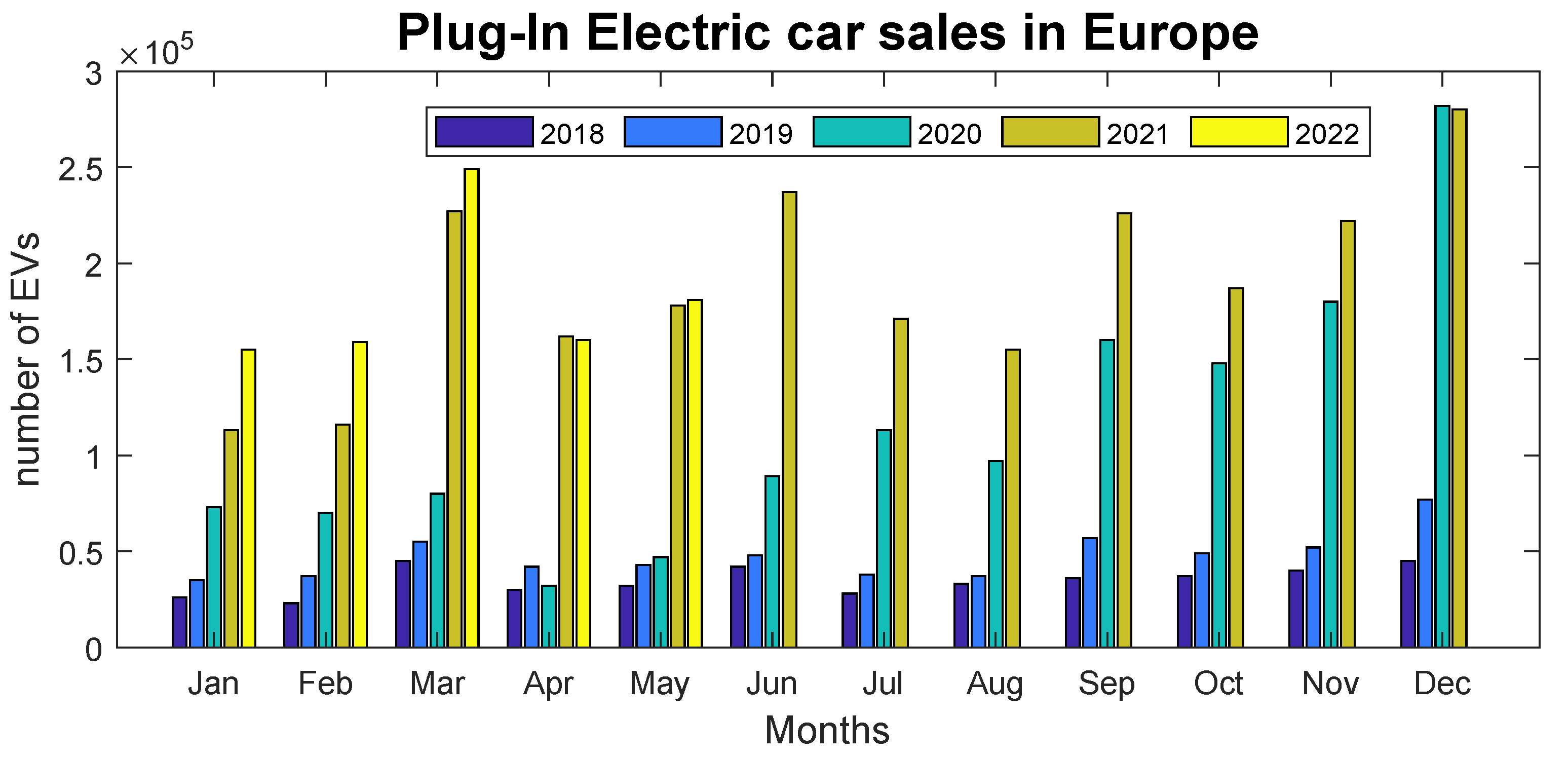
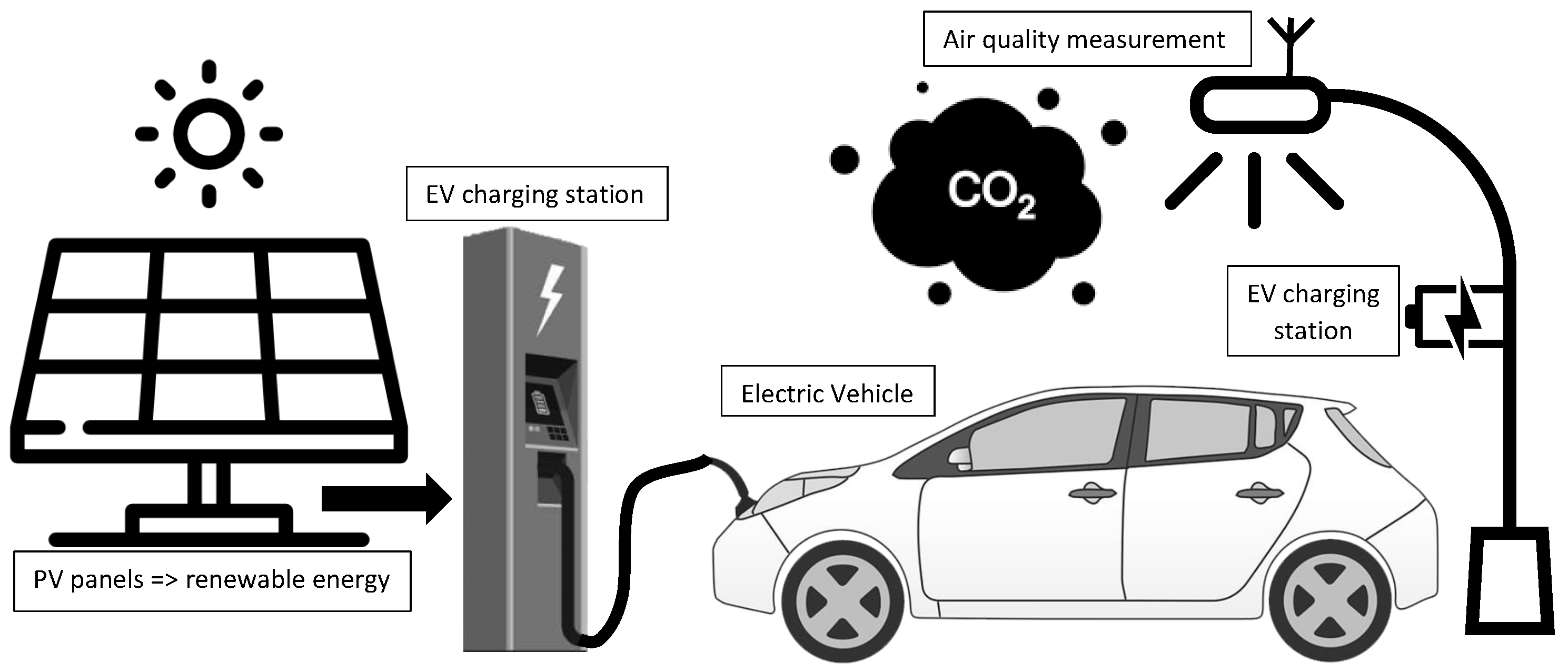

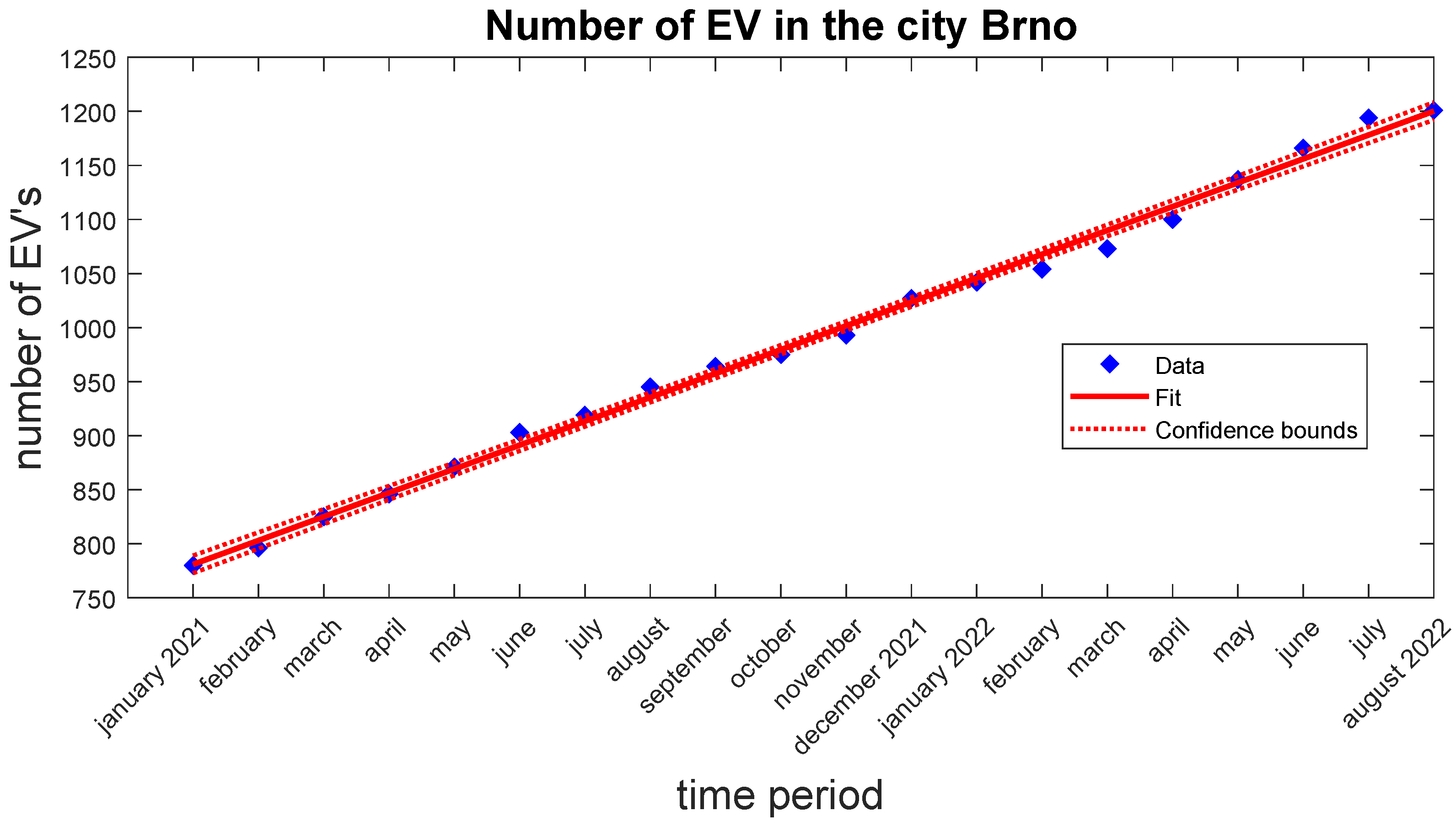

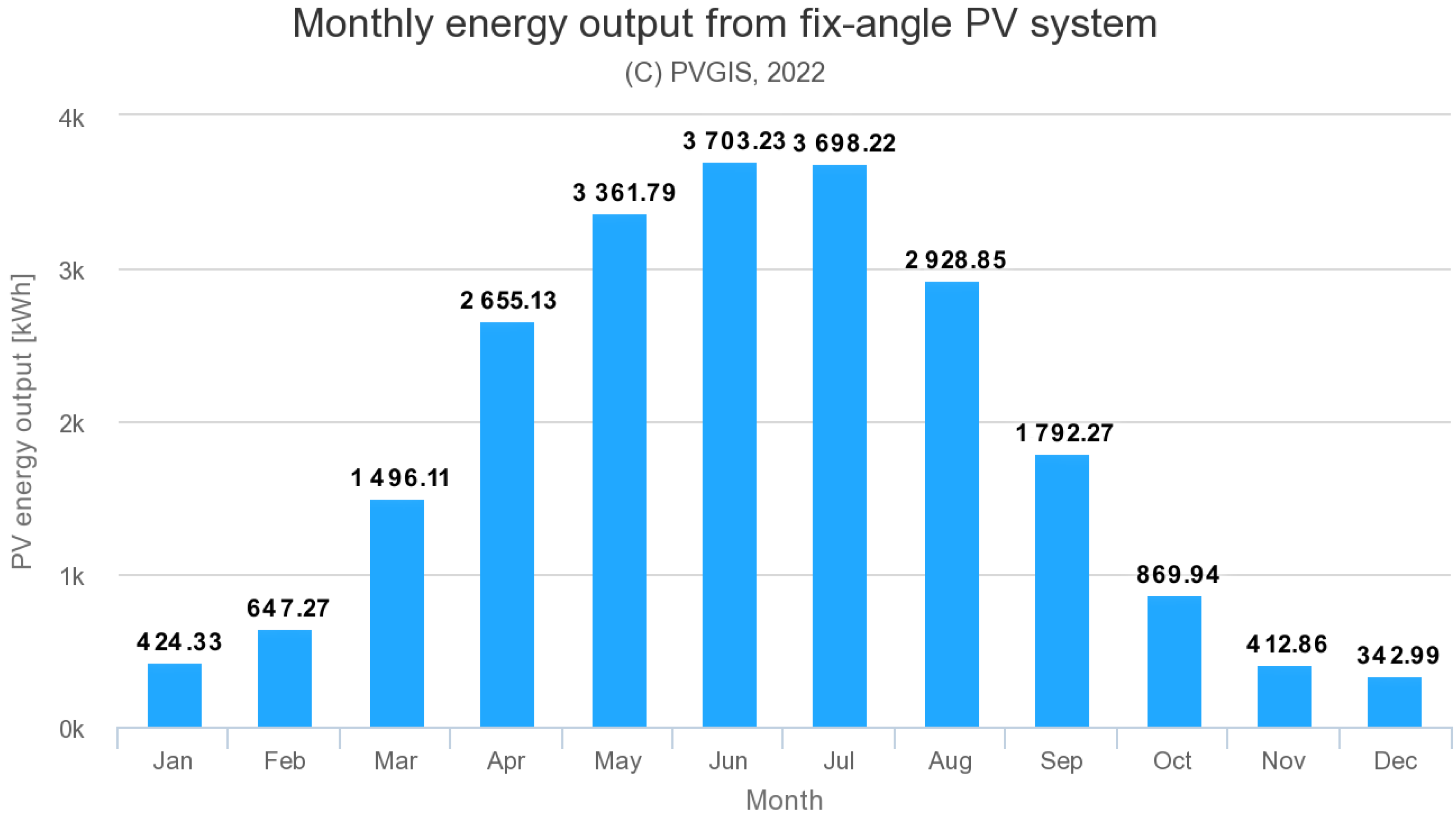
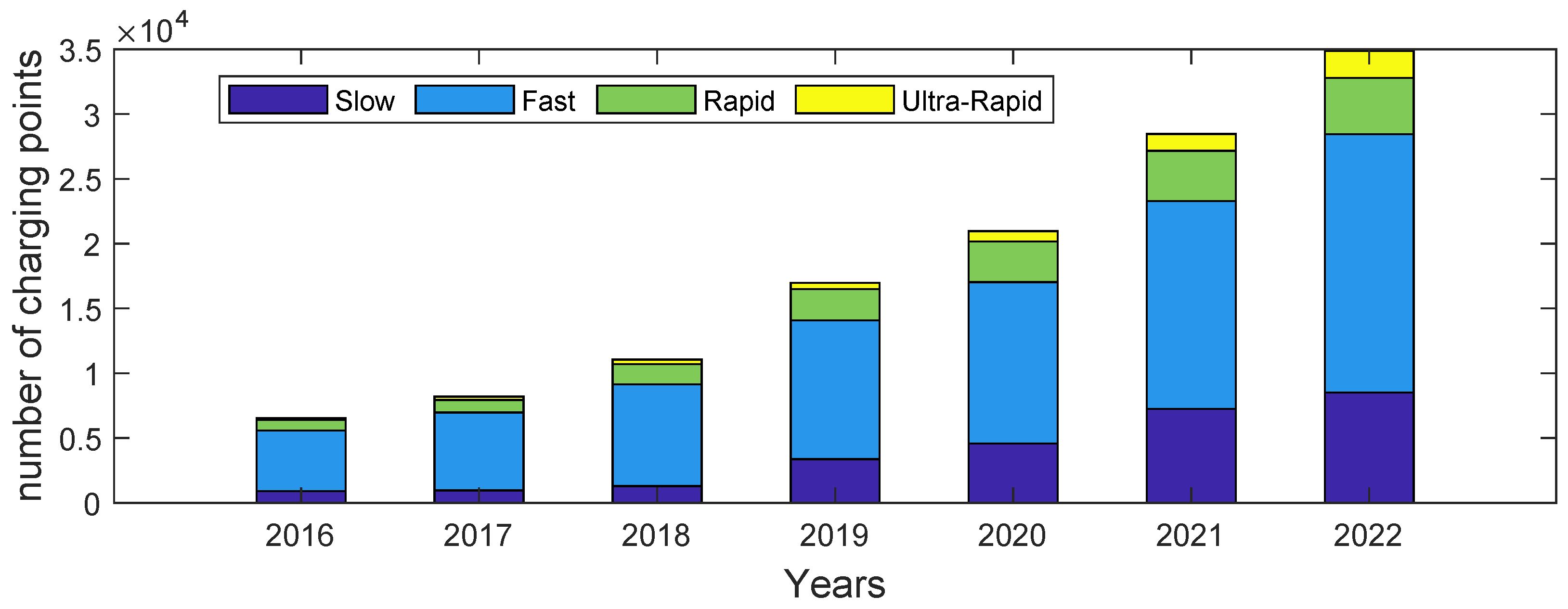
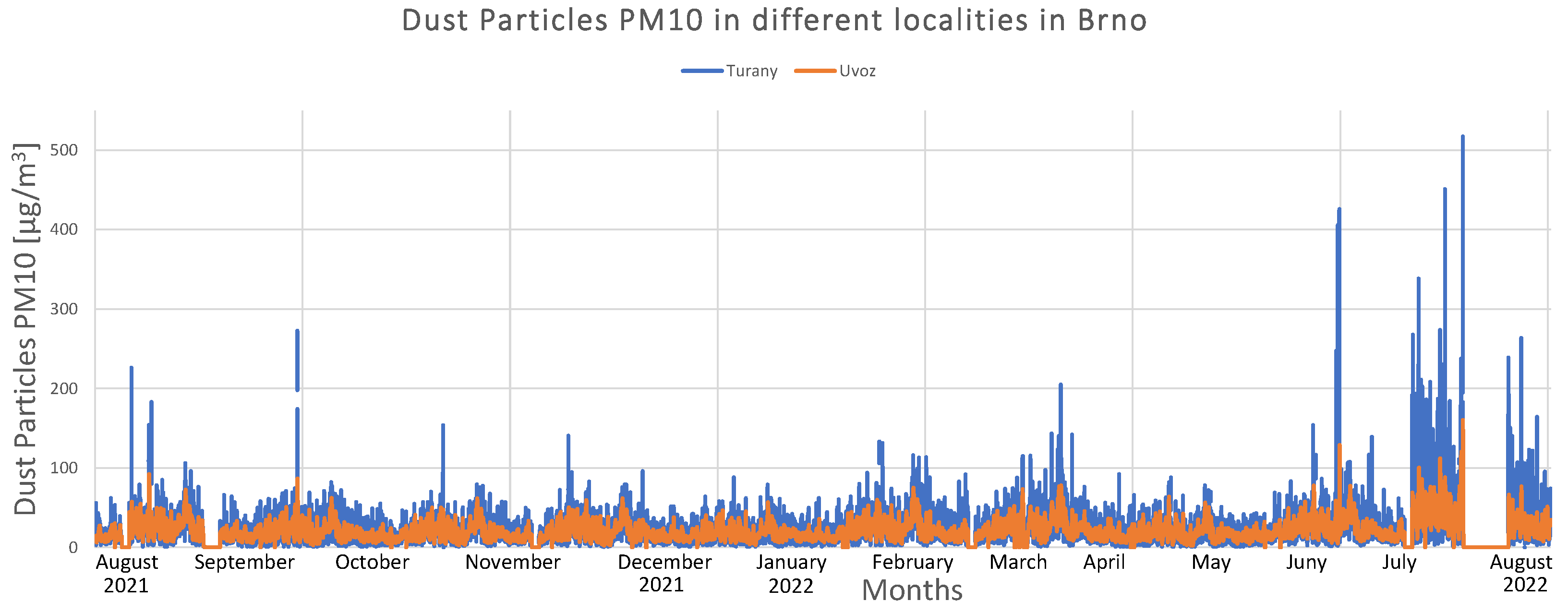
| Owners | Power of Chargers (kW) | Number of Chargers |
|---|---|---|
| Teplarny Brno | 22–150 | 26 |
| CEZ | 11–50 | 17 |
| Tesla | 14–22 | 5 |
| E.ON | 11–50 | 9 |
| PRE | 22–150 | 8 |
| Olife Energy | 40 | 1 |
| Others | - | ±4 |
| Charger Type | Aproximate Charge Duration | For Use When... |
|---|---|---|
| 7 kW “Slow” | 6–8 h | it is planned to stay longer and a quick charge is not required or when just a top-up is required. This slower charge is also thrifty on the battery. |
| 22 kW “Fast” | 2–4 h | it is a short stay and requires a substantial charge. |
| 50 kW “Rapid” | <1 h | the situation requires a quick top-up to allow one to continue a journey or to get travelers to their destination. Rapid charges can cause that battery to deteriorate over time, resulting in a reduced capacity. |
Publisher’s Note: MDPI stays neutral with regard to jurisdictional claims in published maps and institutional affiliations. |
© 2022 by the authors. Licensee MDPI, Basel, Switzerland. This article is an open access article distributed under the terms and conditions of the Creative Commons Attribution (CC BY) license (https://creativecommons.org/licenses/by/4.0/).
Share and Cite
Zavorka, R.; Paar, M. A Focus on Electromobility within Smart City Solutions—Charging Stations, Renewable Energy, and Air Quality Monitoring. Sensors 2022, 22, 7841. https://doi.org/10.3390/s22207841
Zavorka R, Paar M. A Focus on Electromobility within Smart City Solutions—Charging Stations, Renewable Energy, and Air Quality Monitoring. Sensors. 2022; 22(20):7841. https://doi.org/10.3390/s22207841
Chicago/Turabian StyleZavorka, Radek, and Martin Paar. 2022. "A Focus on Electromobility within Smart City Solutions—Charging Stations, Renewable Energy, and Air Quality Monitoring" Sensors 22, no. 20: 7841. https://doi.org/10.3390/s22207841
APA StyleZavorka, R., & Paar, M. (2022). A Focus on Electromobility within Smart City Solutions—Charging Stations, Renewable Energy, and Air Quality Monitoring. Sensors, 22(20), 7841. https://doi.org/10.3390/s22207841







